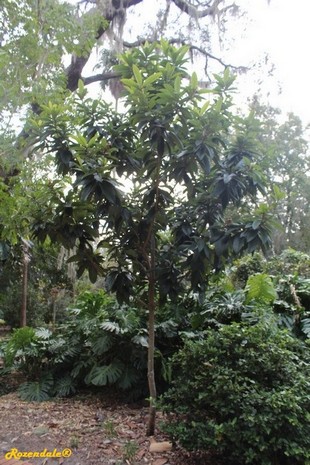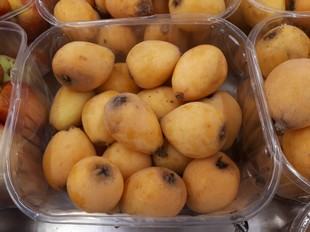Description and Uses
Eriobotrya japonica (Loquat tree) is a
tropical
tree from
Japan . It is mainly grown for its
fruit crops
, which have a
short shelf life. The crop is harvested by
hand picking. It starts flowering after
0 -
0 years. The yield will be
{missing data}, but in its top season there will be a yield of
{missing data}. Other crop types include;
apiculture, timber, fuel, ornamental, mulch, fruit, alcohol. The
fruit is used as
delicacy . The
{missing data} is used as "
{missing data} " with
{missing data} ({missing data} -
{missing data}) as its significant
phytochemical. There is
{missing data} extracted by
{missing data} from the
tree's
{missing data} yielding
{missing data} -
{missing data} oil. The
tree's wood is called
{missing data} and has a density of
655 -
950 kg/m³. Regarding firewood production the
tree's growing speed is
fast, it's energetic value is
4600 ckal/kg and the wood's drying speed is
{missing data}. After
30 years the
tree can be totally removed as it reached its commercial and ecological goal.
Eriobotrya japonica has a lifespan of
50 years.
Environmental limitations
The tree is
8 meters tall with a crown of
6 meters wide. The
tree prefers a planting distance of
350 cm and a row distance of
700 cm. It is
very fast growing and
partial shade tolerant.
Eriobotrya japonica has a
shallow root-system and it has symbiotic associations with the
fungi
(endo-mycorrhiza). It is
not able to fix nitrogen with
"any bacteria. The name(s) or string of bacteria include(s)
"not applicable ". The
tree's flower-morphology is
hermaphroditic and is pollinated by
bees.
Eriobotrya japonica is
{missing data} and
{missing data} and has
no thorns.
Eriobotrya japonica thrives in an altitude of
700 to
2400 meters above sea-level
(tropical). The minimum temperature is
-10°C; optimally between
15 -
28°C. The optimal rainfall is
1150
mm/year. Without irrigation the annual rainfall should be between
650 -
1000mm (L/m²). The optimal soil-pH is between
5.0 -
7.0 in a soil texture of
all. To salt it is
a bit tolerant to wind
{missing data} and to fire
{missing data}.
Pests and Diseases
Eriobotrya japonica is susceptible to the following pests:
Batocera rufomaculata
, Ceratitis capitata
, Aspidiotus perniciosus
, Aphis pomi
, Ceroplastes floridensis
. Virachola isocrates And it's susceptible to the following diseases:
(missing data) ,
,
.
Seed Propagation
Seeds are
recalcitrant and can be stored for
20 months. There are approximative
1050
seeds/kg. The seeds can be propagated as followed:
- (1) Store harvested seeds in water or in the fruit at room temperature
- (2) Soak the seeds overnight in warm water before sowing.
- (3) press the seeds twice its size in the soil soil.






